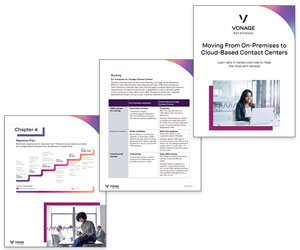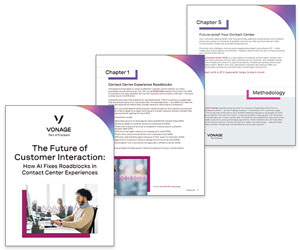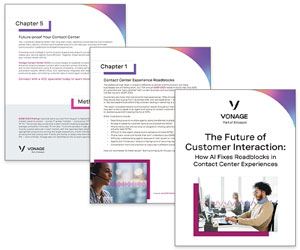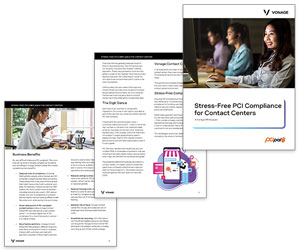Ruzanna Tantushyan of Vonage discusses the change in focus from siloed customer service to the overall customer experience.
Last December, thousands of trailblazers gathered at Salesforce World Tour in New York City at Jacob K. Javits Convention Center for a day of innovation and inspiration.
As scores of attendees packed the impressive all-glass venue in Midtown New York a small group of thought leaders kicked it off with an early-morning breakfast to discuss AI, chatbots, omnichannel, and analytics for contact centres.
It was a deeply engaging and timely discussion as many businesses embark on initiatives to transform their contact centres and deliver on the customer experience promise.
In fact, the discussion organically tilted toward customer experience rather than customer service – a subtle, but noteworthy shift in being customer-centric.
Past and Future of Customer Experience
Customers are changing business models. “Gone are the days when banks were building their profits on overdraft fees,” says Peter Strazalkowski, Salesforce AE for Coveo.
“People coming into the bank to make a simple transaction may also ask about opening a savings account for their child’s college. You cannot say ‘come in in four days to speak with a specialist’.”
Clients look for a holistic, timely, approachable service. Peter suggests that the banking industry has changed a lot and will continue evolving by enabling agents to better understand and serve customers.
“To me it’s all about warm and fuzzy,” says Justin Laing, Operations & Management Leader of XO Group, a media and technology company. “People want to get off the phone and feel good.”
Frank Marzano, Manager, CS Operations at Vertafore, insurance software solutions provider for independent agencies and brokers, MGAs, and carriers, shared his personal story echoing the same concept of an emotional response to a service.
Imagine a cancelled flight, no communication, no apology and an earliest possible flight in three days. The perfect storm for an unhappy customer.
Contrast that with a 30-minute delay with another airline, accompanied by frequent, useful communication and a voucher for the inconvenience. Which airline are you likely to choose going forward? It’s a no-brainer.
What the Future Looks Like
The self-service model is going to prevail. Customers are going to see reasonable and user-friendly ways to find solutions to simple issues.
Think of changing a password or finding your way to a certain department. Both Frank’s and Justin’s teams are focusing on optimising chatbots with more capabilities to increase efficiency for customers and businesses alike.
Imagine starting with a self-service option, not finding a solution and being transferred to an agent. In this case, your information is collected and passed on to the right agent who already has your case history and who is ready to assist without having you to explain the issue all over again or transferring you to a different agent who can assist better.
Other emerging areas to keep an eye on are enhanced cohesive data integration and mobile platforms for businesses to drive more sales.
“New tools like NVM’s Conversation Analyzer will allow businesses to access information, assess and improve customer experience,” says Justin.
Customers are also driving the demand for omnichannel communication. “We see sales being closed over a text, through chatbots. Something that is new,” continues Justin.
More and more businesses integrate their strategies with omnichannel platforms to provide multiple mediums for communication.
Justin argues that businesses that leverage the same infrastructure to add chatbots, for example, without having to build new logic routes and with predictive analysis, are likely to see better results.
Challenges
Changing customer service is not easy. “Think of it as a large aircraft that is hard to turn around,” says Peter. “But it has to happen as customer service is now viewed as a source of revenue.”
Integrating district sources, enabling agents or bankers to analyse and proactively address customers’ needs is a shift in customer experience approach the industry will need to work on. This is true not only in banking industry but across the board.
What’s in It for the Customer?
In a bank or at a retail store people should anticipate experiencing a more human, thoughtful, well-informed, emotional side of the business. At the end of the day, we all want questions answered, issues resolved, and ideas introduced that we might otherwise have not thought of. All in all, a helpful attentive experience.
On the agent side, businesses are moving in the direction of repurposing positions and creating “relationship manager” roles for people to use their soft skills, leaving mundane tasks like password resets to bots.
Author: Robyn Coppell
Published On: 9th May 2019
Read more about - Guest Blogs, Vonage



















